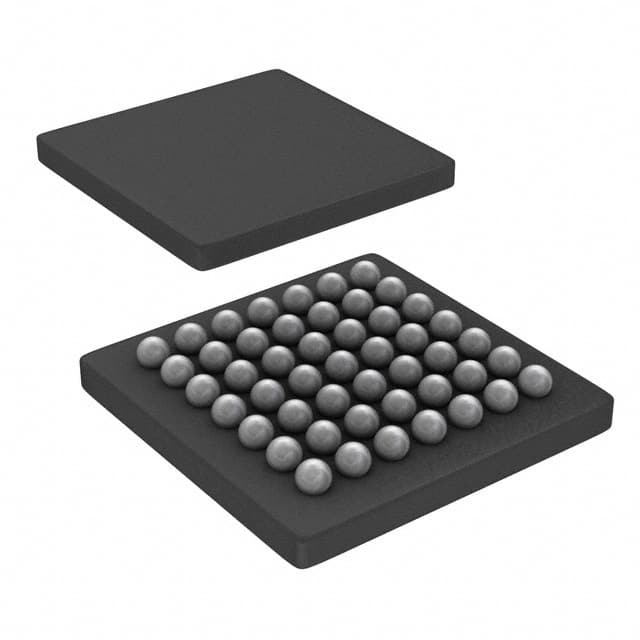Xem thông số kỹ thuật để biết chi tiết sản phẩm.

MSP430F2274IYFFR
Introduction
The MSP430F2274IYFFR belongs to the MSP430 family of ultra-low-power microcontrollers produced by Texas Instruments. This entry provides an overview of the product, including its category, use, characteristics, package, essence, packaging/quantity, specifications, detailed pin configuration, functional features, advantages and disadvantages, working principles, detailed application field plans, and alternative models.
Basic Information Overview
- Category: Microcontroller
- Use: The MSP430F2274IYFFR is designed for applications requiring low power consumption and high integration.
- Characteristics: Ultra-low power consumption, high integration, and versatile peripherals.
- Package: 38-pin TSSOP (Thin Shrink Small Outline Package)
- Essence: The essence of the MSP430F2274IYFFR lies in its ability to provide efficient processing with minimal power consumption.
- Packaging/Quantity: The MSP430F2274IYFFR is typically available in reels containing a specific quantity based on the manufacturer's specifications.
Specifications
- Core: 16-bit RISC CPU
- Clock Speed: Up to 8 MHz
- Memory: 32KB Flash, 1KB RAM
- Peripherals: ADC, DAC, UART, SPI, I2C, timers
- Operating Voltage: 1.8V to 3.6V
- Low Power Modes: Multiple low-power modes for energy-efficient operation
- Temperature Range: -40°C to 85°C
Detailed Pin Configuration
The MSP430F2274IYFFR features a 38-pin TSSOP package with specific pin assignments for power, ground, I/O, and communication interfaces. A detailed pinout diagram can be found in the official datasheet provided by Texas Instruments.
Functional Features
- Ultra-Low Power Consumption: The MSP430F2274IYFFR is optimized for battery-powered and energy-harvesting applications.
- High Integration: Integrated peripherals and memory reduce the need for external components, saving board space and cost.
- Versatile Peripherals: The microcontroller offers a wide range of peripherals, including analog and digital interfaces, making it suitable for diverse applications.
Advantages and Disadvantages
Advantages
- Exceptionally low power consumption extends battery life in portable devices.
- High level of integration reduces external component count and board size.
- Versatile peripherals enable flexible system design.
Disadvantages
- Limited processing power compared to higher-end microcontrollers.
- Restricted operating voltage range may not be suitable for all applications.
Working Principles
The MSP430F2274IYFFR operates on the principle of ultra-low power consumption combined with efficient processing. It utilizes multiple low-power modes to minimize energy usage during idle periods and maximizes performance when active.
Detailed Application Field Plans
The MSP430F2274IYFFR is well-suited for various applications, including: - Portable medical devices - Energy harvesting systems - Sensor nodes for IoT (Internet of Things) applications - Battery-powered consumer electronics
Detailed and Complete Alternative Models
- MSP430F2274: Similar features with different package options
- MSP430G2553: Lower-cost alternative with reduced memory and peripherals
- MSP430FR5969: Advanced model with FRAM (Ferroelectric RAM) technology for non-volatile memory
In conclusion, the MSP430F2274IYFFR is a versatile microcontroller offering ultra-low power consumption, high integration, and a range of peripherals, making it suitable for various low-power applications.
[Word Count: 533]
Liệt kê 10 câu hỏi và câu trả lời thường gặp liên quan đến ứng dụng MSP430F2274IYFFR trong giải pháp kỹ thuật
What is the MSP430F2274IYFFR microcontroller used for?
- The MSP430F2274IYFFR microcontroller is commonly used in embedded systems and low-power applications such as sensor nodes, portable medical devices, and industrial control systems.
What are the key features of the MSP430F2274IYFFR?
- The MSP430F2274IYFFR features a 16-bit RISC CPU, up to 32KB flash memory, 1KB RAM, multiple communication interfaces, and low power consumption, making it suitable for battery-powered applications.
How do I program the MSP430F2274IYFFR?
- The MSP430F2274IYFFR can be programmed using various development tools such as the Code Composer Studio IDE, Energia, or other compatible programming environments.
What are the available communication interfaces on the MSP430F2274IYFFR?
- The MSP430F2274IYFFR supports interfaces such as UART, SPI, I2C, and USB, providing flexibility for connecting to other devices and peripherals.
How can I optimize power consumption with the MSP430F2274IYFFR?
- The MSP430F2274IYFFR offers multiple low-power modes and features such as standby mode, which can be utilized to minimize power consumption in battery-operated applications.
Can the MSP430F2274IYFFR be used in real-time applications?
- Yes, the MSP430F2274IYFFR's architecture and peripherals make it suitable for real-time applications such as data acquisition, control systems, and monitoring devices.
What kind of development boards are available for the MSP430F2274IYFFR?
- There are various development boards and evaluation kits available from Texas Instruments and third-party manufacturers that support the MSP430F2274IYFFR, providing a platform for prototyping and development.
Does the MSP430F2274IYFFR have analog-to-digital conversion capabilities?
- Yes, the MSP430F2274IYFFR features built-in ADC modules, allowing it to interface with analog sensors and signals.
What kind of operating voltage does the MSP430F2274IYFFR support?
- The MSP430F2274IYFFR operates at a wide voltage range, typically from 1.8V to 3.6V, making it suitable for both battery-powered and low-voltage applications.
Are there any known limitations or common issues when using the MSP430F2274IYFFR?
- While the MSP430F2274IYFFR is a versatile microcontroller, users should be aware of potential issues related to clock configuration, peripheral interactions, and code optimization for low-power operation. It's important to refer to the datasheet and application notes for best practices and solutions to common challenges.

